Venezuela’s President Nicholas Maduro has issued a decree claiming sovereignty over Guyana’s territorial waters in the Atlantic Ocean off the Essequibo region and Minister of Foreign Affairs Carl Greenidge yesterday said the Venezuelan ambassador will be summoned to give an explanation.
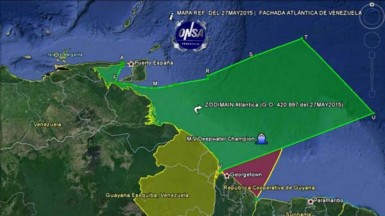
Maps created after the decree by Venezuela’s National Organisation for Rescue and Maritime Safety (ONSA), a non-governmental organisation comprising merchants, sports and retired naval officers, indicate that the claim would include a large part of the Stabroek Block, where US firm ExxonMobil discovered oil recently. Exxon’s Liza-1 well is sited off the Demerara coast.
“The press reports on the contents are alarming and we are seeking to verify its authenticity and its import. Needless to say, we shall be calling in the country’s ambassador to explain its meaning and to voice our concern about this escalation of a long running attempt to achieve by questionable means what Venezuela has so far failed to achieve by internationally accepted legal and diplomatic approaches,” Greenidge told the Sunday Stabroek yesterday.
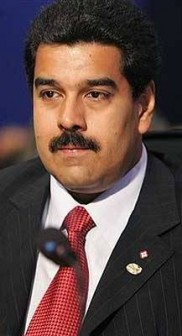
Subsequently, following a meeting with President David Granger, the Foreign Affairs Minister reiterated that the Venezuelan Ambassador to Guyana, Reina Margarita Arratia Diaz will be summoned to give an explanation. He said officials are looking at the documents they have in relation to the decree and noted that it is quite detailed, with coordinates provided.
“When we are ready, we will call her in and have exchanges on this issue,” he said, adding that this would be done by Monday.
Asked whether Guyana’s ambassador in Caracas Geoffrey Da Silva had informed government of the decree, Greenidge said he had not. “The issue was drawn to our attention by someone else and we are trying to find out why is it that happened,” he said. As to whether Guyana’s partners were informed of the development, Greenidge noted that “we embarked on a regular process whereby we have been keeping in close contact and having bilaterals across the spectrum with many countries and the US is included.”
“At the moment I am sure that whatever information we have, they have also,” he added.
Writing on his blog yesterday, Guyana’s ambassador to Kuwait Dr. Odeen Ishmael, who served as Guyana’s ambassador to Venezuela from 2003 to 2011, said Maduro on May 27 issued a decree creating the “Atlantic coast of Venezuela,” which now includes sovereignty over Guyana’s territorial waters in the Atlantic Ocean off the Essequibo region.
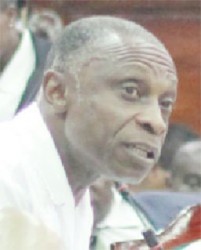
A map, issued to coincide with this decree, indicates that Venezuela is now claiming all the territorial waters within the 200 miles range and blocking Guyana’s access to its resources in this area of the Atlantic Ocean, he observed.
“By this decree, the Venezuela government has also created the so-called “Areas of Integral Defense of Marine Zones and Islands,” thus ratifying its maritime sovereignty over the waters of the parts of the Caribbean and off the coast of Guyana. In doing so, it now claims sovereignty over the continental shelf and a projection of the Atlantic Ocean off the Essequibo region of Guyana, and even stretching into part of Suriname’s maritime
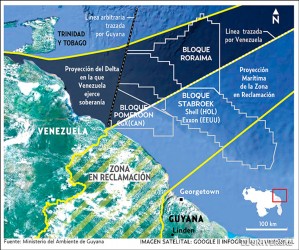
space,” Ishmael wrote.
This new extension of Venezuela’s claim to Guyanese territorial waters was published in the May 27 edition of Venezuela’s Official Gazette No. 40.669. The presidential decree, No. 1.787, was dated May 26, 2015 – the 49th Anniversary of Guyana’s independence. Ishmael noted that it is the second decree expressing a claim to Guyana’s territorial waters; the first, issued by former President Raul Leoni, 47 years ago in July 1968, purportedly claimed “sovereignty” over a twelve-mile strip of Guyana’s continental shelf along the Essequibo coast, according to Ishmael.
‘Preposterous’
Former Foreign Minister of Guyana Rashleigh Jackson yesterday called Caracas’ claim “preposterous.” He said Venezuela, which he dubbed “A big bully” has no right to do what it is doing and asserted that the move was a manifestation of force and aggression.
He pointed out that the February 17, 1966 Geneva Agreement forbids the claiming of new territory while the Agreement is in force. Part of Article V (2) of the Agreement states: “No new claim, or enlargement of an existing claim, to territorial sovereignty in those territories shall be asserted while this Agreement is in force, nor shall any claim whatsoever be asserted otherwise than in the Mixed Commission while that Commission is in being.”
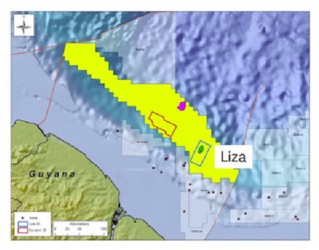
Emphasising that he is offering his personal views, Jackson told Stabroek News that the matter has to be dealt with and Venezuela does not seem to want to operate within the law. “You can’t claim something that’s not yours,” he said. “It’s just a question of bullying…they mouth peace but they practice aggression,” he added.
The Venezuelan news site El Estimulo reported Venezuelan Foreign Minister Delcy Rodríguez Gómez as saying that the move was aimed at the “defense of the Essequibo.”
The territorial controversy between Guyana and Venezuela had flared up again when Venezuelan Foreign Minister Delcy Rodríguez in February sent communication to the Country Manager of Esso Exploration and Production Guyana Limited, objecting to the dispatch of a rig to proceed with the exploration of an oil well in the concession granted by the Government of Guyana.
The Government of Guyana subsequently dispatched a Note Verbale to the Venezuelan Foreign Ministry, requesting that Caracas desist from taking any actions that could only result in the stymieing of the development of Guyana and its people and that would be in contravention of international law.
In another statement on March 3rd, Caracas denied that it had sought to stymie the development of Guyana and said that Georgetown’s statements to this effect are “unacceptable and unjust.” Caracas also called for national unity of all Venezuelans to “defend the territorial integrity” of Venezuela.
The statement also said that the Venezuelan government “deplores” the reaction of the Guyana government to the Venezuelan assertion against the unilateral acts that signify the start of exploratory activities by Exxon Mobil and its subsidiary Esso Exploration and Production Guyana Limited in the ‘Stabroek Block’ without the occurrence of prior notification to Caracas, due to the fact that the specific area of operations in the Stabroek Block is defined as a maritime area in the process of delimitation “that corresponds to the claim of territorial sovereignty by Venezuela, within the Geneva Accord.”
Guyana has since reiterated that it was studying options under the Geneva Agreement to bring the longstanding territorial controversy with Caracas to an end.
ExxonMobil subsequently said that it had found significant quantities of hydrocarbons in its Stabroek Block in Guyana’s territorial waters. The 23,000 square kilometers of the Stabroek Block is located within the area into which the new territorial claim is now extended.
‘Volatility’
Maduro’s action underlines the volatility of its relationship with Guyana on the border controversy and maritime issues. While he had originally adopted a bellicose stance towards Guyana on border matters, the late Venezuelan President Hugo Chavez had softened his stance when he visited Guyana in 2004, stating that Caracas would no longer object to development projects in Essequibo. Since his passing, his successor Maduro has maintained a harder line, which has been attributed to domestic pressures.
And despite frequent references to good relations and bonhomie, Georgetown has not been able to dissuade Caracas from excursions like those which snared the MV Teknik Perdana – a seismic exploration ship indirectly contracted to US oil company Anadarko Petroleum Corporation Inc to explore the company’s Roraima Block offshore Guyana with a view to determining whether commercial quantities of hydrocarbon existed there.
On October 10, 2013, Venezuelan naval forces seized the Teknik Perdana. Caracas subsequently charged the captain of the vessel with allegedly violating Venezuela’s exclusive economic zone and the vessel and the rest of the crew were later released. The exploration plans of Anadarko have been put on hold.
Venezuelan objections to the Upper Mazaruni hydro project in the 1970s were partially blamed for the collapse of the scheme.
Under the administrations of former presidents Bharrat Jagdeo and Donald Ramotar, Georgetown was criticised for souring relations with the UK and the US on a variety of issues which could dampen its efforts to mobilise international support for its case against Venezuela. Its switching of support early in the Ramotar administration from the UK to Argentina over the Falkland Islands was seen as a key misstep as was its abstention at the United Nations on a vote condemning Russia’s annexation of Ukraine’s Crimea.




